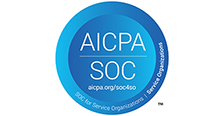
Resources
-
March 10, 2015
Supreme Court Returns Affordable Housing Enforcement To The Courts
By: Thomas F. Carroll, III, Esq. and Stephen M. Eisdorfer, Esq.
On March 10, 2015, the New Jersey Supreme Court unanimously ruled that the courts will once again assume the lead role in enforcing the constitutional requirement, imposed by the Mount Laurel doctrine, that municipalities must create realistic opportunities for the construction of low and moderate income housing.
The Ruling
The ruling eliminates the requirement that builders must first “exhaust administrative remedies” before the Council on Affordable Housing (COAH) before suing municipalities in court. The ruling establishes a 30 day window, commencing on June 8, 2015, for the approximately 360 municipalities that have been before COAH since 2008 to formulate compliant housing plans and voluntarily submit them to the courts for review. Municipalities that fail to file with the courts within that 30-day window, or that otherwise delay in submitting plans to the courts, will be vulnerable to lawsuits seeking constitutional compliance and ultimately site-specific builder’s remedies.
The Supreme Court directs the trial courts to determine municipal fair share housing obligations based upon the methodology employed in the last set of lawful COAH regulations, namely those adopted by COAH in 1994, but updated based upon current data.
The Supreme Court’s ruling does not affect the approximately 200 municipalities that have not been before COAH since 2008. Those municipalities continue to be potentially vulnerable to immediate exclusionary zoning litigation, including litigation seeking site specific builder’s remedies, unless those towns have previously acquired immunity orders or judgments of repose from the courts.
What’s In It For Builders?
The new Supreme Court decision has immediate consequences for builders. First, the ruling creates new pressure on municipalities to formulate compliant housing plans to meet obligations larger than those projected in COAH’s 2008 regulations or its proposed (but never adopted) 2014 regulations. For builders who own, or have identified, suitable sites for inclusionary residential or mixed use projects, this ruling creates an immediate opportunity to seek voluntary rezoning of the properties as part of the municipal planning process.
Second, the Supreme Court made it clear that, if a town files within the 30-day window and submits its plan to the courts for review, the proceeding is not to be an “ex parte” proceeding. There must be broad notice and opportunities by interested parties to participate. Moreover, the Supreme Court directed the trial courts to freely appoint special masters and engage in mediation between towns and parties contesting the municipal plans. This creates opportunities for builders to participate, challenge objectionable municipal plans, and assert the merits of their own proposed sites for inclusionary development.
Finally, although the Supreme Court placed a number of procedural hurdles in the path of the builder who seeks a builder’s remedy from a recalcitrant municipality that filed a fair share under the 2008 third round regulations, it plainly envisions that, at the end of the day, builder’s remedies will be available. Towns can no longer simply dodge their obligations.
The Background
The Supreme Court’s ruling is the most recent in a series of lawsuits and court decisions since 2003 striking down attempts by COAH to subvert the constitutional mandate and the New Jersey Fair Housing Act. The New Jersey Builders Association (NJBA), represented by Hill Wallack LLP, has played a lead role in these cases. Most recently, in cases brought by the NJBA, represented by Hill Wallack LLP attorneys Thomas F. Carroll, III, Esq., and Stephen Eisdorfer, Esq., and by the Fair Share Housing Center, the Appellate Division struck down COAH’s 2008 regulations. The Appellate Division ordered COAH to adopt new regulations based upon its 1994 regulations. On appeal, the Supreme Court affirmed that decision in 2013 and set a deadline for COAH to adopt new regulations.
In June 2014, COAH proposed new regulations for public comment. Many parties, including the NJBA, criticized those regulations. In October 2014, the COAH Board deadlocked on whether to adopt the proposed new regulations. As a result, the Supreme Court’s deadline passed without any COAH action. The Supreme Court heard argument in January 2015, including argument by Stephen Eisdorfer, Esq., on behalf of the NJBA, on what remedial action it should take in the face of COAH’s violation of the Court’s order. The new ruling represents the Court’s answer to that question.
What’s Next?
The Supreme Court’s ruling creates new opportunities for builders. To take advantage of these opportunities, however, builders will have to navigate through a complex and novel set of procedures. The time is now to engage with towns of interest, as the Court’s new ruling creates a new chapter in Mount Laurel compliance, and municipalities will now be searching for sites that can be favorably rezoned to provide for affordable housing and the market rate housing that typically accompanies it.
Please feel free to contact the authors or your other Hill Wallack LLP contact to learn more about the Court’s decision and what it may mean to you.
About Hill Wallack LLP
Founded in 1978, Hill Wallack LLP is a leading law firm with offices in Princeton and Morristown, New Jersey and Yardley, Pennsylvania. Our regional strength places us in an ideal position in today’s market. With 70 lawyers, our mid-market size allows us to provide sophisticated, high-level service to clients in a cost-efficient, responsive manner.
Our attorneys are called upon to tackle some of the toughest legal and business challenges. The firm represents businesses, nonprofit and government entities, and individuals in litigation, transactional and regulatory issues. The firm also includes those skilled in family law, trusts & estates, tax liability and other areas of individual service. For more information, please visit www.hillwallack.com.


